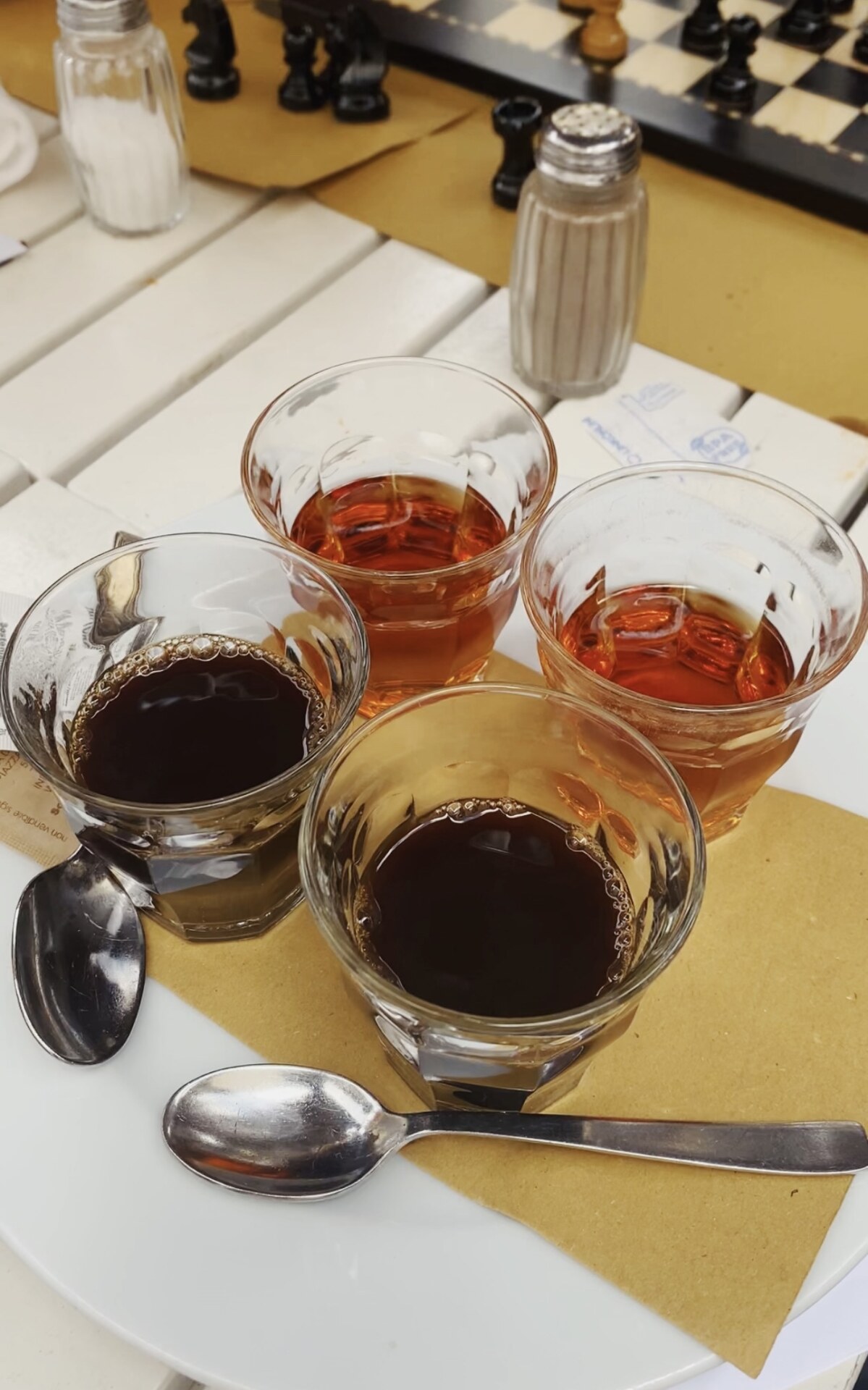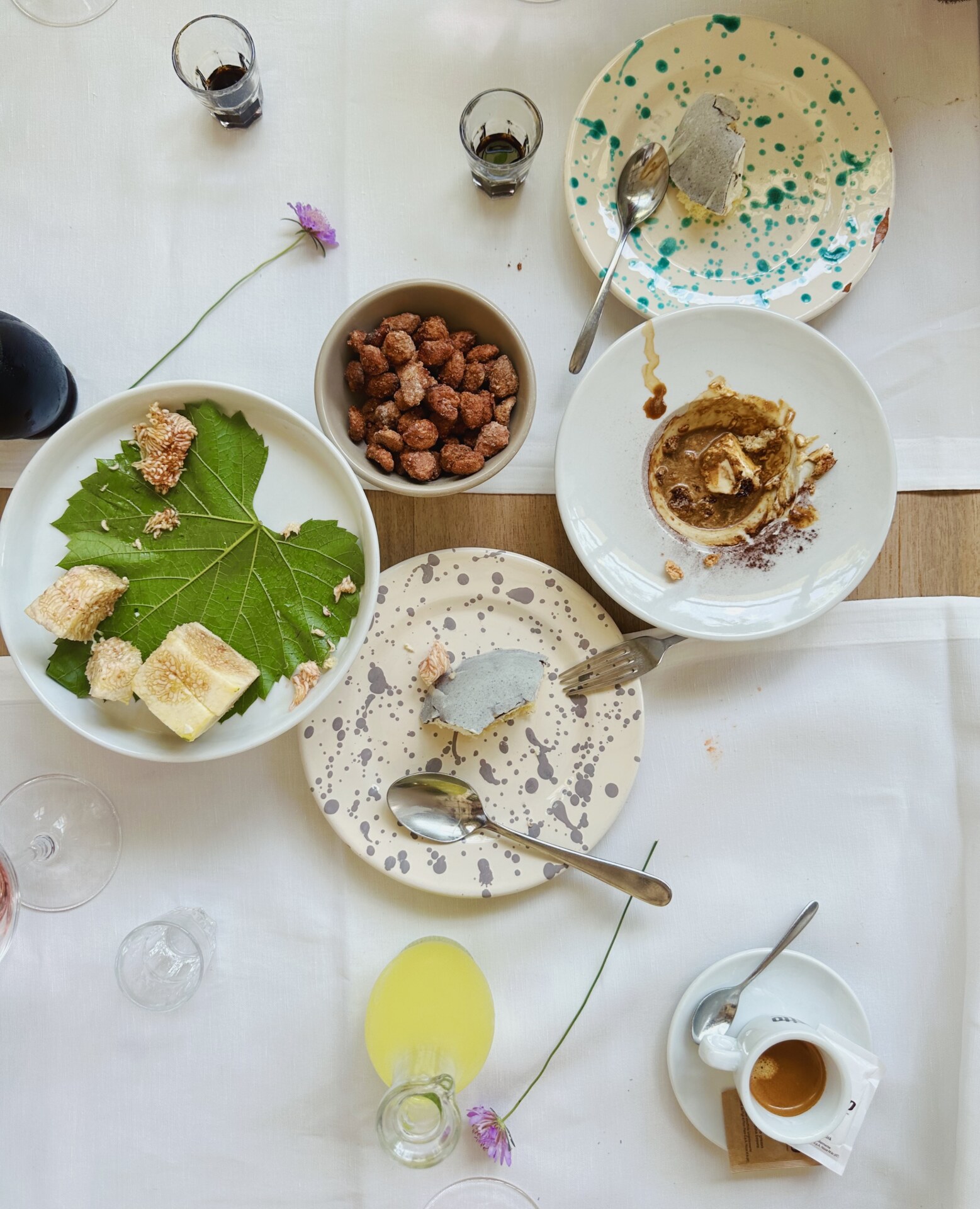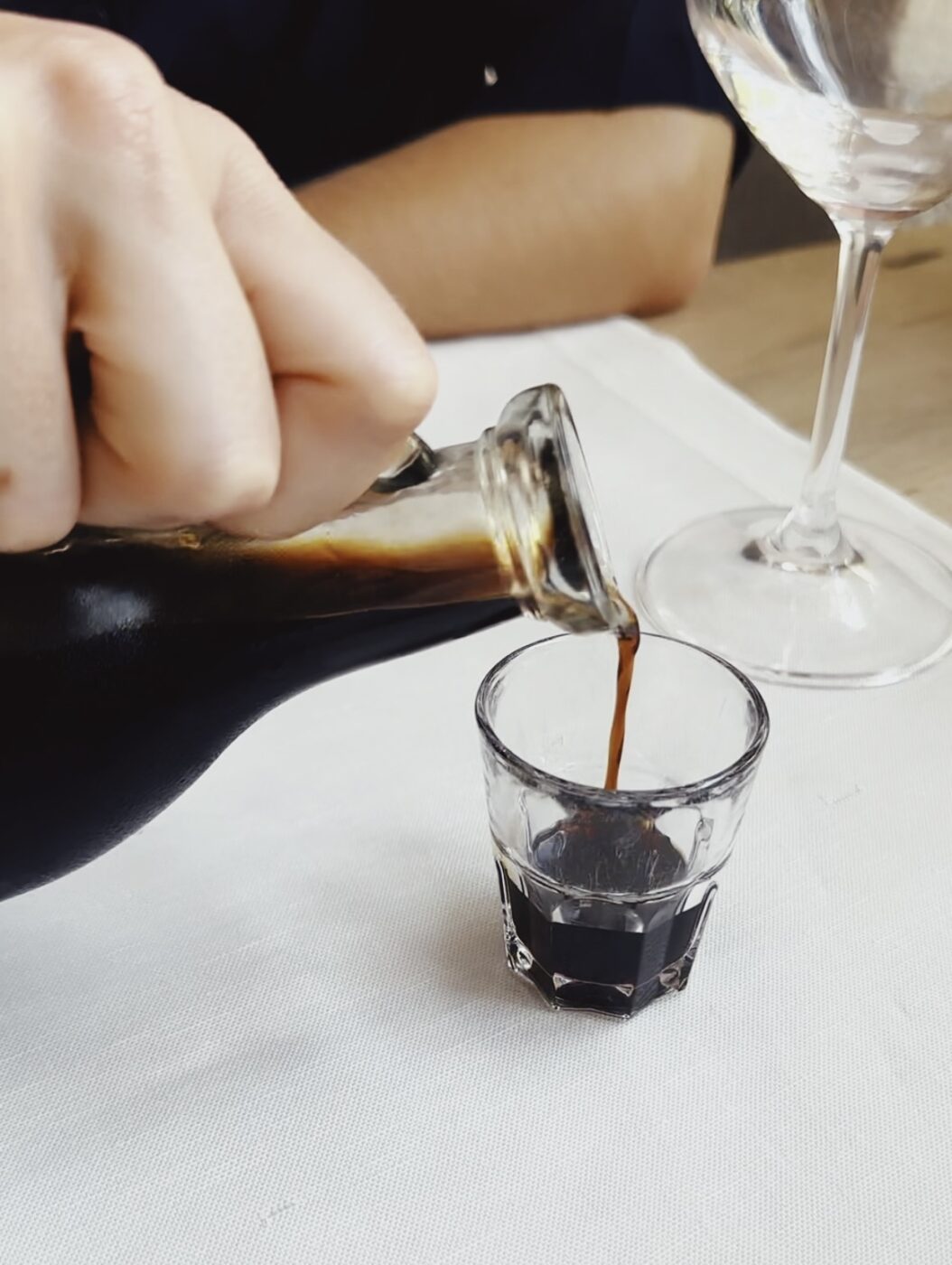There’s nothing that compares to the feeling of finishing a large Italian meal–I’m talking antipasti, primo, secondo, and maybe even a bite of dolce–suspended somewhere between the lightness from the few bottles of wine and immovable from the weight in your stomach. In this all-too-common occurrence, there’s only one solution: digestivi. A whole class of highly alcoholic, intensely flavored liqueurs that are somehow designed to help you feel better. The name comes from the Italian word for “digestive”, as these spirits (maybe not scientifically) are proven to aid with digestion.
A digestivo is almost always served straight, in a small glass with or without ice–but don’t make the mistake of taking it like a shot. Many of the spirits are also great paired with prosecco or mixed into a cocktail for aperitivo or sipped with espresso in a caffe corretto. The correct post-meal procession is dolce, espresso, and then digestivo: these liqueurs are referred to as ammazzacaffe–coffee killers–because they wash away the bitter taste of coffee.
Digestivi are also a great way for friendly restaurant owners to offer a token of hospitality, providing a complimentary digestivo along with a chat after dinner. Below, four of our favorite after-dinner sips; pick one of these after your next big Italian meal.
AMARO
Amaro translates to “bitter”, though certain members of this family aren’t always so. Traditionally, the digestivo is made by infusing grape brandy–or, in some cases, another neutral spirit or wine–with a secret mix of botanicals that can include herbs, flowers, bark, citrus, and/or spices. Then, the liquid is sweetened with a sugary syrup and aged. As such, the flavors can range from orangey and fruity to herby and minty to vanilla-y and spicy, depending on where and how it’s made. The result is a dark-colored, silky, luxurious drink.
Bittersweet liqueurs like amari have been made in Italian monasteries since the 13th century, appreciated for their alleged digestive and healing properties. Some of the most famous Italian labels have been producing their amaro since the 1800s, and today, nearly almost every small town across the country produces their own. We always opt for one of these local amari, but some of our favorite labels include Vecchio Amaro del Capo (Calabria), Amaro Nonino (Friuli), Amaro Montenegro (Bologna), Amaro Averna (Sicily), Cynar (Termoli), Amaro Braulio (Bormio), and Amaro Fernet-Branca (Milan). Amaro is typically enjoyed neat–either at room temperature or over ice–or mixed into a cocktail at aperitivo. In this latter camp, you can find Campari and Aperol, which are technically considered amari (yeah, we were surprised too). Like these fan favorites, most amari can be turned into a spritz with a bit of bubbles.

GRAPPA
Grappa is the strongest digestif, with an ABV that typically ranges from 35% to 60% (the minimum legally allowed is 37.5%!). The fiery liqueur is made from distilling the fermented pomace–skins, seeds, stems, and pulp–that remain after pressing grapes for wine. In the 1600s, grappa originated as a cheap way for people to drink alcohol when wine was either too expensive or had to be proffered as taxes to the king; distilling wine’s leftovers was much cheaper. Each type of grape makes a different flavored grappa, with flavor profiles similar to their respective wines. The two most common varieties of grappa are bianca–young, unaged–and affinata in legno–aged in wood. Aging grappa for 12 months (Vecchia) or 18 months (Riserva) makes for a more rounded mouthfeel and gives it a darker color.
In 2008, the EU legally defined the spirit, declaring that authentic grappa can only be made in Italy, Italian-speaking Switzerland, and the Republic of San Marino. It’s almost always served alone or in a caffe corretto, and we’re especially partial to this warming spirit during the winter. In Valle d’Aosta, drinking grappa is a social ritual: the spirit is mixed with coffee and various other liquors or spices, heated, and poured into a grolla or friendship cup–a carved wooden chalice with multiple spouts, a short stem, and a lid–where it gets lit on fire and passed around, forming friendships between strangers. Grappa is the perfect example of zero waste and a circular economy, and we’ll gladly drink to sustainability.
LIMONCELLO
Italy’s sweetest and most well-known digestivo, limoncello unequivocally conjures images of sunny days by the Amalfi Coast. Which makes sense, considering the term “limoncello” originally referred to the smaller lemons grown on the Amalfi coast, and today, PGI Limoncello can only be produced with local Sorrento PGI lemons and Amalfi PGI lemons. You can find types of limoncello made elsewhere in Italy and abroad, and some of it is delicious, but stay away from the neon yellow ones. It’s a wonderful liqueur to use for desserts, and the best way to end a dinner al mare.
Born in Campania, this liqueur is made from infusing alcohol with lemon peels and adding sugar and water, creating a delightfully sweet, tart, and refreshing spirit. Limoncello is said to have originated around the year 1000 AD when sailors consumed vast amounts of lemon and citrus to help combat the scurvy epidemic; there was even a decree that ships had to stock up on lemons. It’s also believed that lemons were combined with alcohol in the Middle Ages and used as medicinal elixirs.

SAMBUCA
This digestif is as potent as it is polarizing. Made with just alcohol, star anise, and sugar, the liqueur is overwhelmingly licorice flavored. The name comes from the Italian word for elderflower–sambucus–although botanicals like elderflower and fennel are optional. Syrupy sambuca’s legal minimum ABV is 38%, but most hover around 40-42%.
The spirit originated in the small town of Civitavecchia, just outside of Rome, and is said to have developed from the Arabic anise liqueur “Zammut” that was imported there. It was first commercially produced in Italy by Luigi Manzi in 1851, although the drink didn’t gain popularity until the mid 20th century when it became a favorite of the Dolce Vita Era. Sambuca can be taken straight–and sometimes you might find it served with three espresso beans, representing health, happiness, and prosperity–but we prefer it paired with coffee in a caffe corretto. If you like anise, it’s a great liqueur to experiment with in cocktails too.







